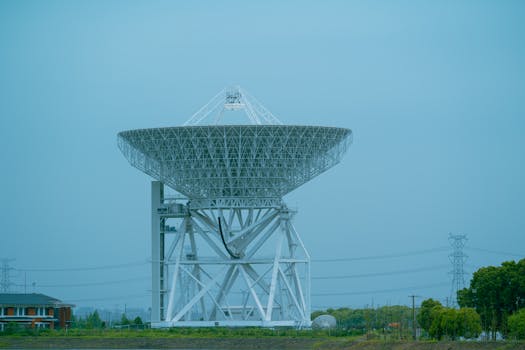The Future is Now: Exploring the Cutting-Edge Innovations in Satellite Telecommunications

The Future is Now: Exploring the Cutting-Edge Innovations in Satellite Telecommunications
The Satellite Telecommunications industry is undergoing a significant transformation, driven by cutting-edge innovations and technological advancements. The increasing demand for global connectivity, the rise of new space companies, and advancements in digital technologies are some of the key factors driving this transformation. In this article, we will explore the current state of the satellite telecommunications industry and the future of satellite telecommunications.
Introduction to Satellite Telecommunications
Satellite telecommunications refers to the use of artificial satellites to transmit and receive signals for communication purposes. The industry has come a long way since the launch of the first commercial communications satellite, Intelsat 1, in 1965. Today, satellite telecommunications play a vital role in providing global connectivity, enabling communication services such as voice, data, and video transmission. The industry has also expanded to include new applications such as satellite broadband, navigation, and Earth observation.
Current State of the Industry
The satellite telecommunications industry is currently experiencing a period of rapid growth and transformation. The increasing demand for global connectivity, driven by the rise of mobile devices, social media, and cloud computing, has created new opportunities for satellite telecommunications. The industry is also witnessing a shift towards the use of smaller, more efficient satellites, such as smallsats and cubesats, which offer greater flexibility and lower costs. Additionally, the development of new digital technologies such as 5G, artificial intelligence, and the Internet of Things (IoT) is expected to further drive the growth of the industry.
Future of Satellite Telecommunications
The future of satellite telecommunications is expected to be shaped by several key trends and innovations. One of the most significant trends is the development of satellite constellations, which involve the launch of multiple satellites into low-Earth orbit to provide global coverage and high-speed connectivity. Companies such as SpaceX, OneWeb, and Amazon’s Kuiper Systems are already working on such projects. Another trend is the use of advanced digital technologies such as 5G, AI, and IoT to enhance the capabilities of satellite telecommunications. The development of new antenna technologies, such as phased arrays and flat panel antennas, is also expected to improve the performance and efficiency of satellite communications.
Conclusion
In conclusion, the Satellite Telecommunications industry is undergoing a significant transformation, driven by cutting-edge innovations and technological advancements. The increasing demand for global connectivity, the rise of new space companies, and advancements in digital technologies are some of the key factors driving this transformation. As the industry continues to evolve, we can expect to see new and innovative applications of satellite telecommunications, enabling greater connectivity and communication capabilities for people around the world.




